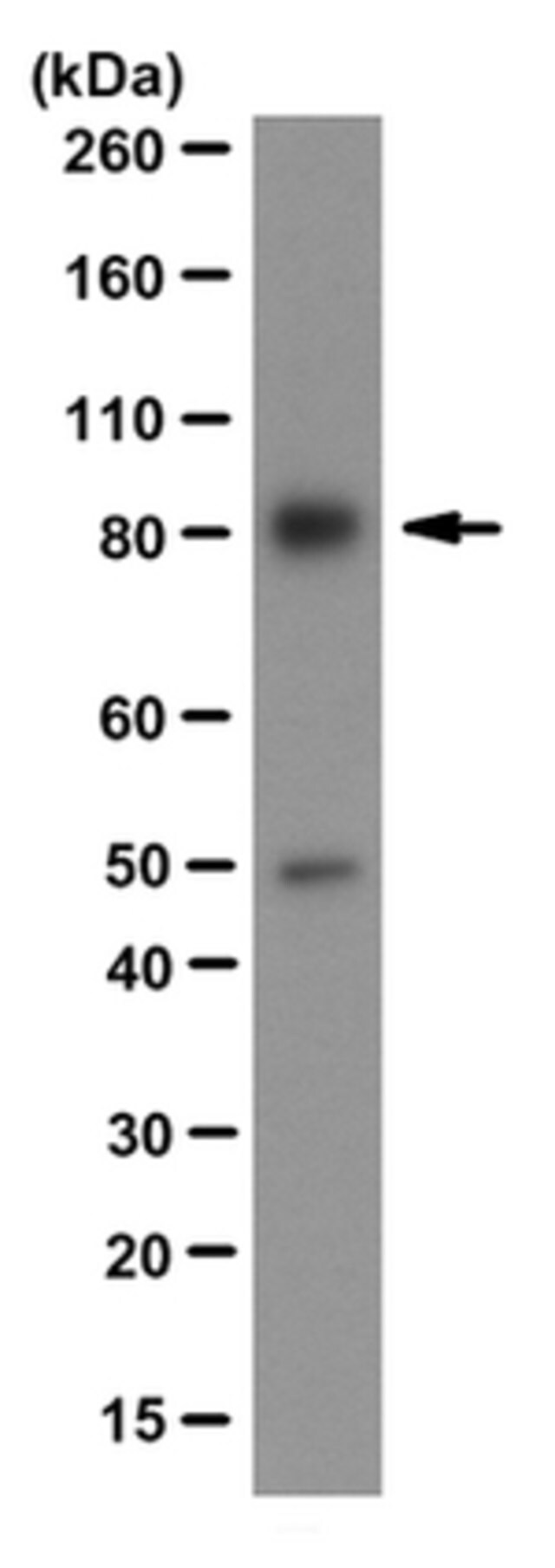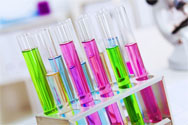您的位置:首页 > 产品中心 > Anti-XPB Antibody, clone 15TF2-1B3
Anti-XPB Antibody, clone 15TF2-1B3

| 产品编号: | 4152252 |
| 规格: | ascites fluid, clone 15TF2-1B3, from mouse |
| 包装规格: | 100 μL |
| 产品类别: | 进口试剂 |
| 品牌: | Sigma-Aldrich |
| 优惠价: | 立即咨询 |
产品别名
Anti-XPB Antibody, clone 15TF2-1B3
TFIIH basal transcription factor complex helicase XPB subunit, Basic transcription factor 2 89 kDa subunit, BTF2 p89, DNA excision repair protein ERCC-3, DNA repair protein complementing XP-B cells, TFIIH basal transcription factor complex 89 kDa subunit
基本信息
| eCl@ss | 32160702 |
| General description【一般描述】 | Transcription factor II human (TFIIH) basal transcription factor complex helicase XPB subunit (EC 3.6.4.12; UniProt P19447; also known as BTF2 p89, DNA excision repair protein ERCC-3, DNA repair helicase, DNA repair protein complementing XP-B cells, TFIIH 89 kDa subunit, TFIIH basal transcription factor complex 89 kDa subunit, TFIIH p89, Basic transcription factor 2 89 kDa subunit, Xeroderma pigmentosum group B-complementing protein) is encoded by the ERCC3 (also known as BTF2, GTF2H, RAD25, TFIIH, XPB) gene (Gene ID 2071) in human. DNA lesions caused by UV irradiation, drugs, or other environmental factors are eliminated by two nucleotide excision repair (NER) pathways, Global genome repair (GGR) and transcription-coupled repair (TCR). In GGR, the removal of lesions requires their recognition by the repair factor XPC/HR23b and the subsequent opening of the DNA duplex by TFIIH. The resulting single-stranded structure is stabilized by XPA and replication protein A (RPA). XPG is recruited through its interaction with TFIIH on the 3′ side of the lesion and its positioning on the cut site requires RPA. The interaction between XPA and XPB (ERCC1) stimulates the recruitment of ERCC1-XPF on the 5′ side of the DNA lesion. The damaged oligonucleotide can then be removed through the double incision by XPG and ERCC1-XPF endonucleases. In TCR, these factors (except XPC/HR23B) are recruited by the stalled RNA pol II in front of the damage with the help of the CSB and CSA proteins. |
| Immunogen【免疫原】 | Recombinant protein corresponding to human XPB. Epitope: N-terminus |
| Application【应用】 | This Anti-XPB Antibody, clone 15TF2-1B3 is validated for use in Western Blotting, Immunocytochemistry for the detection of XPB. Research Sub Category Nuclear Receptors Research Category Epigenetics & Nuclear Function Western Blotting Analysis: A representative lot detected Xpb in murine embryonic fibroblasts (MEFs) and HeLa cells, as well as in transgenic animal-derived MEFs expressing Xpb lacking last 43 C-terminal amino acids (Andressoo, J.O., et al. (2009). Mol Cell Biol.29(5):1276-290). Western Blotting Analysis: A representative lot detected endougenous as well as exogenously expressed Xpb in both U2OS17 whole cell lysate and in THIIF p62 subunit immunoprecipitate (Ziani, S., et al. (2014). J Cell Biol.;206(5):589-598). Western Blotting Analysis: A representative lot detected Xpb in THIIF TTDA subunit immunoprecipitate (Giglia-Mari,G., et al. (2006). PLoS Biol. 4(6): e156). Immunocytochemistry Analysis: A representative lot detected XPB recruitment to the DNA damage sites in the nuclei of UV-irradated HeLa cells (Alekseev, S., et al. (2014). Chem Biol. 21(3):398-407). |
| Quality【质量】 | Evaluated by Western Blotting in HeLa nuclear extract. Western Blotting Analysis: A 1:2,000 dilution of this antibody detected XPB in 10 µg of HeLa nuclear extract. |
| Physical form【外形】 | Unpurified Mouse monoclonal IgG1κ ascites with 0.05% sodium azide. |
| Other Notes【其他说明】 | Concentration: Please refer to lot specific datasheet. |
产品性质
| Quality Level【质量水平】 | 100 |
| biological source【生物来源】 | mouse |
| antibody form【抗体形式】 | ascites fluid |
| antibody product type | primary antibodies |
| clone【克隆】 | 15TF2-1B3, monoclonal |
| species reactivity | human |
| technique(s) | immunocytochemistry: suitable western blot: suitable |
| isotype【同位素/亚型】 | IgG1κ |
| NCBI accession no.【NCBI登记号】 | NP_000113 |
| UniProt accession no.【UniProt登记号】 | P19447 |
| shipped in【运输】 | wet ice |
产品说明
| Target description【目标描述】 | ~85 kDa observed. Uncharacterized band(s) may appear in some lysates. |
| Storage and Stability【储存及稳定性】 | Stable for 1 year at -20°C from date of receipt. Handling Recommendations: Upon receipt and prior to removing the cap, centrifuge the vial and gently mix the solution. Aliquot into microcentrifuge tubes and store at -20°C. Avoid repeated freeze/thaw cycles, which may damage IgG and affect product performance. |
| Disclaimer【免责声明】 | Unless otherwise stated in our catalog or other company documentation accompanying the product(s), our products are intended for research use only and are not to be used for any other purpose, which includes but is not limited to, unauthorized commercial uses, in vitro diagnostic uses, ex vivo or in vivo therapeutic uses or any type of consumption or application to humans or animals. |
安全信息
| Storage Class Code【储存分类代码】 | 12 - Non Combustible Liquids |
| WGK | nwg |




